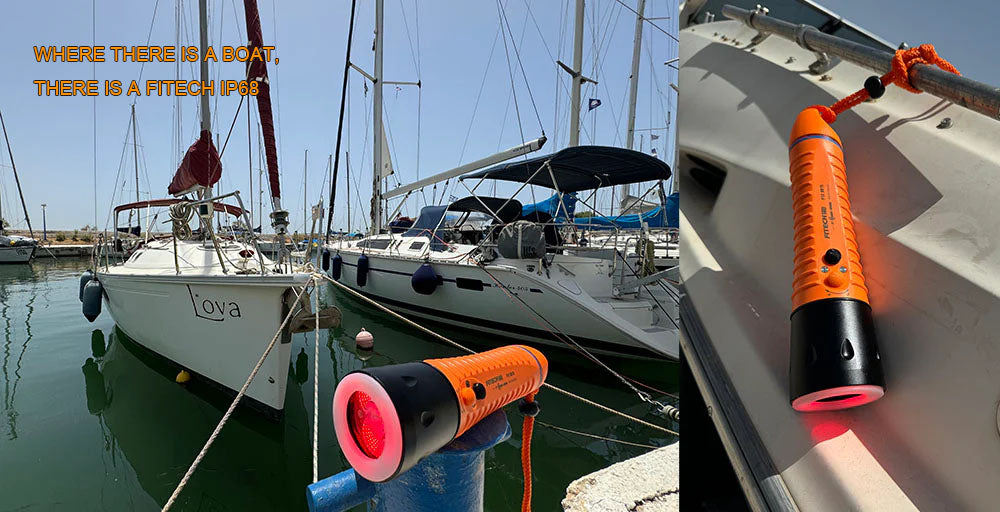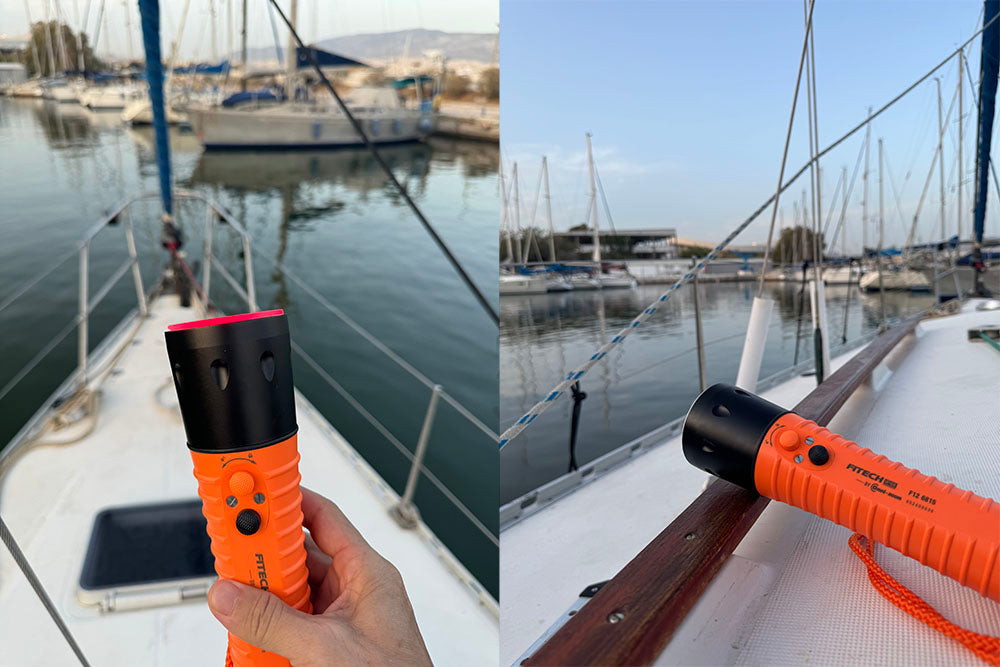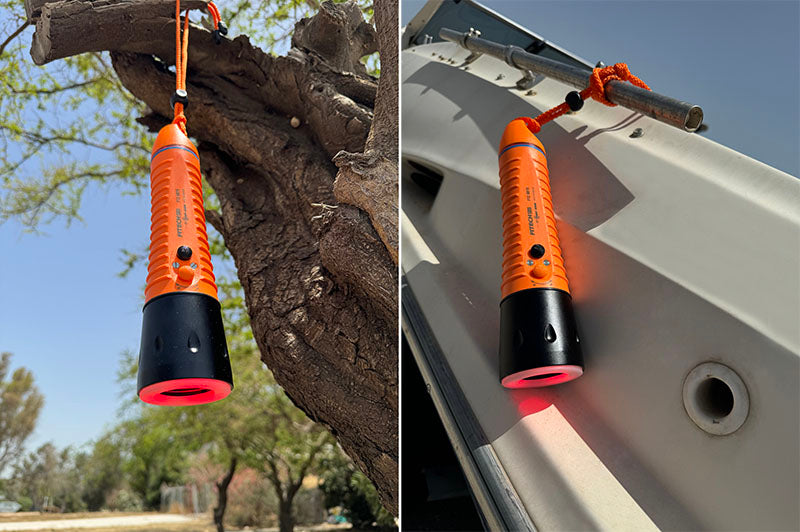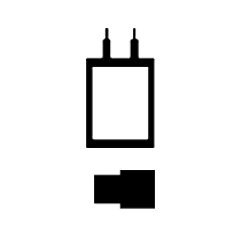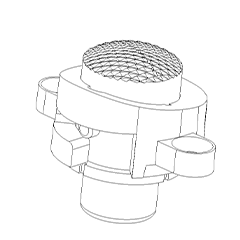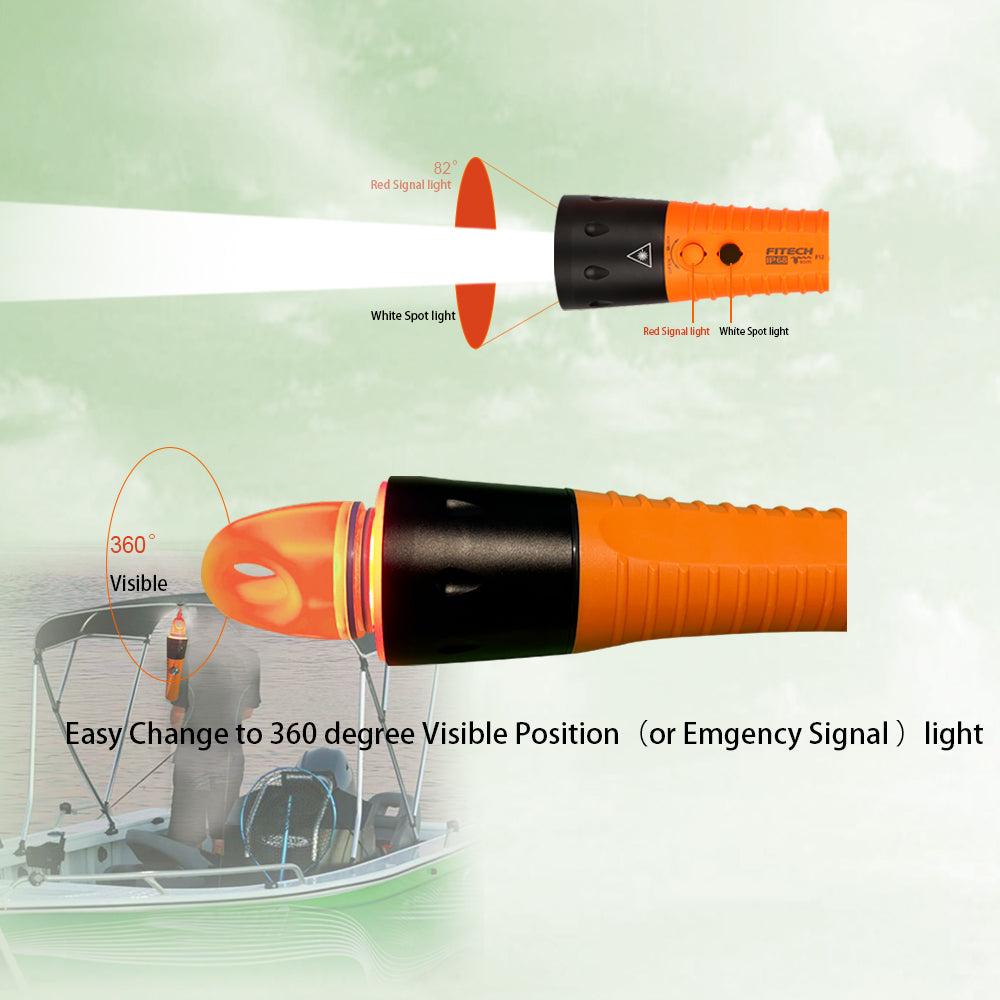
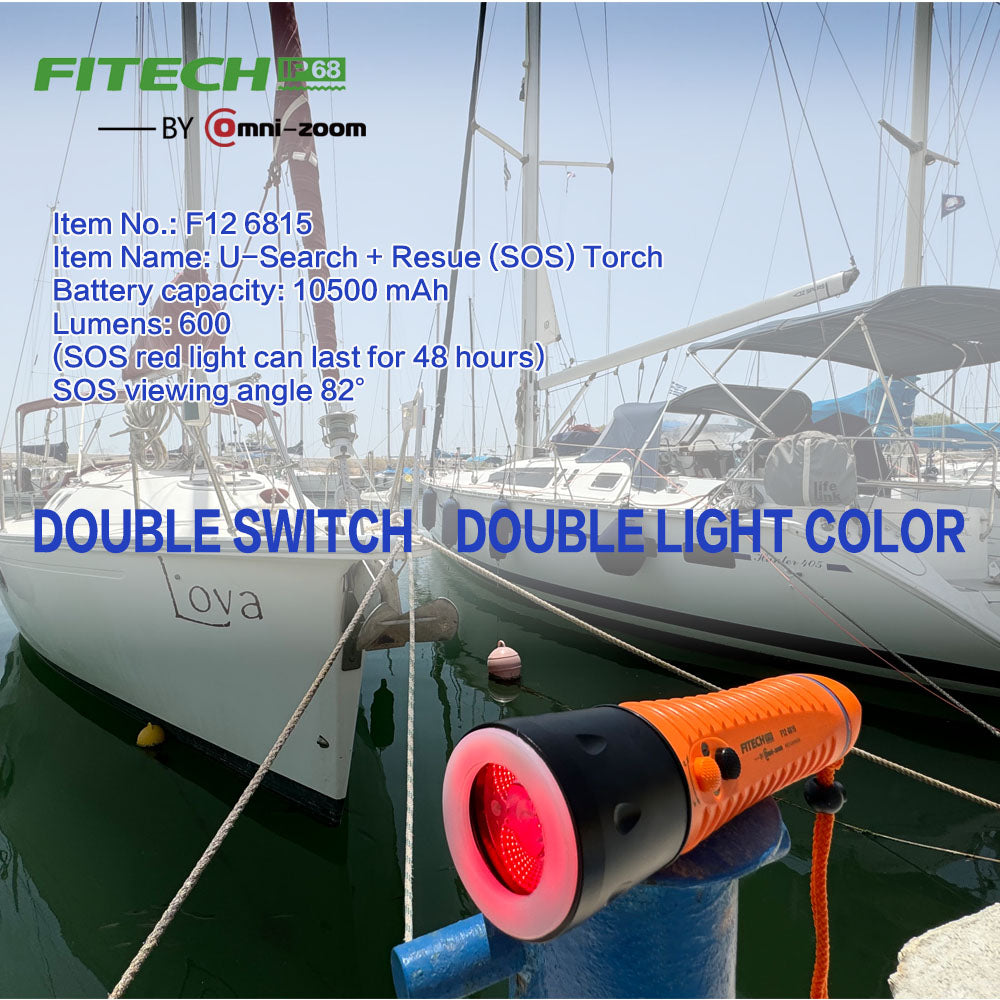
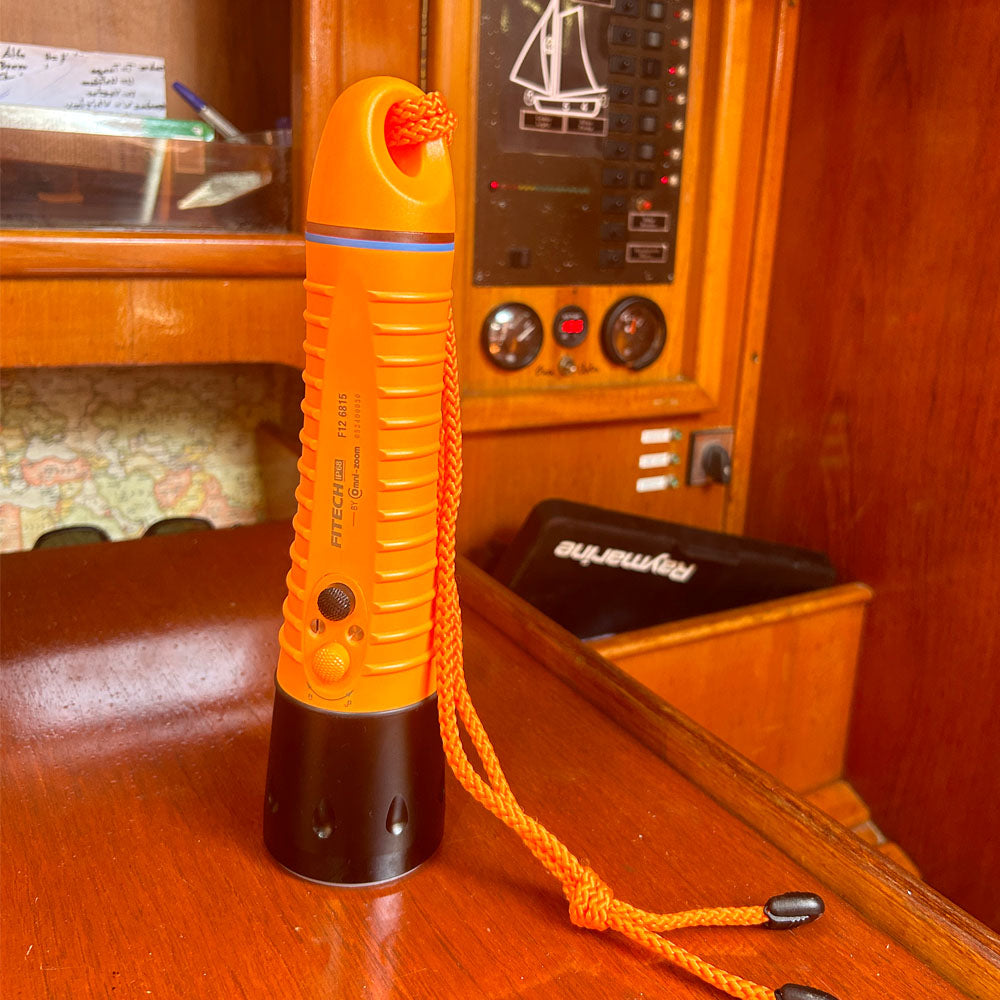
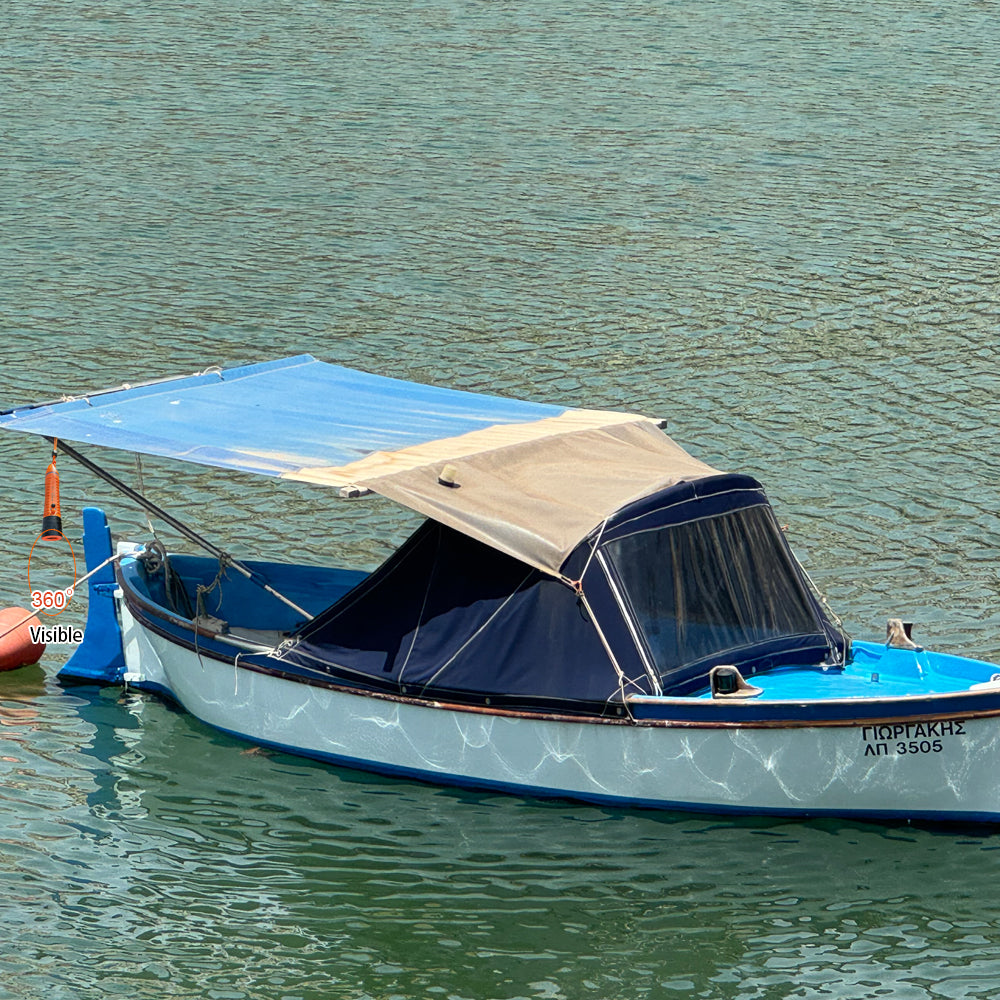
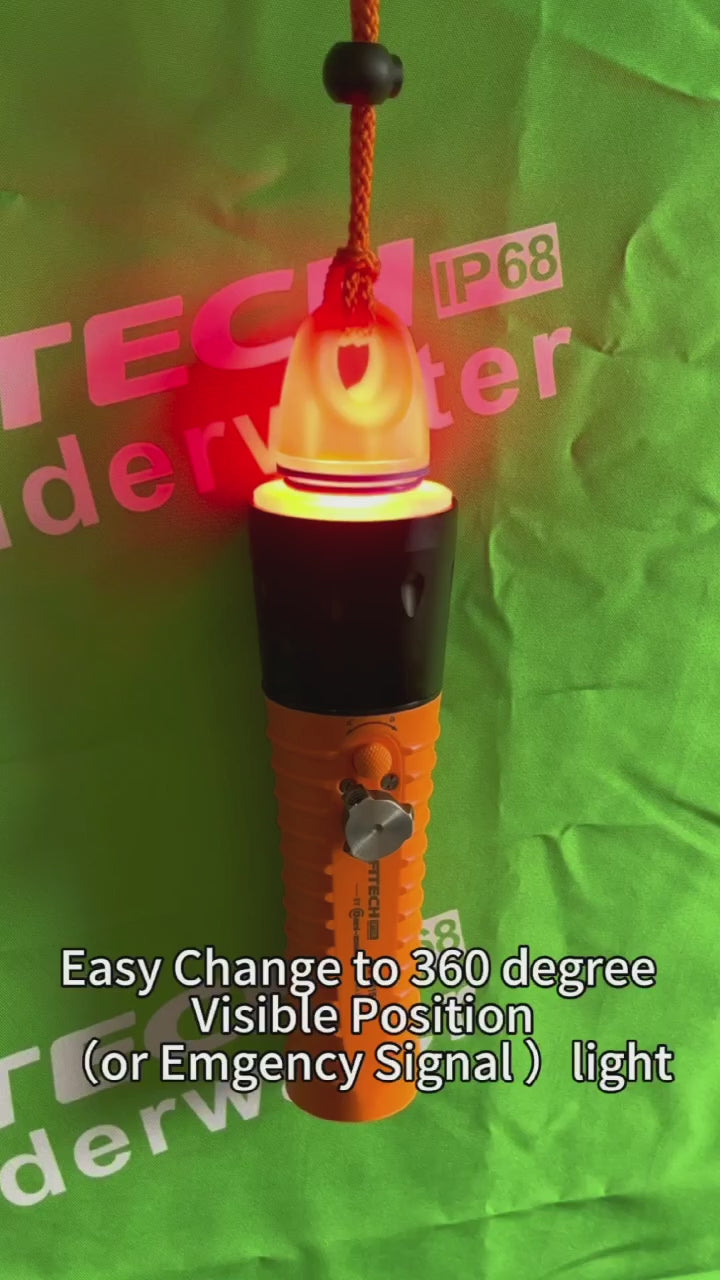
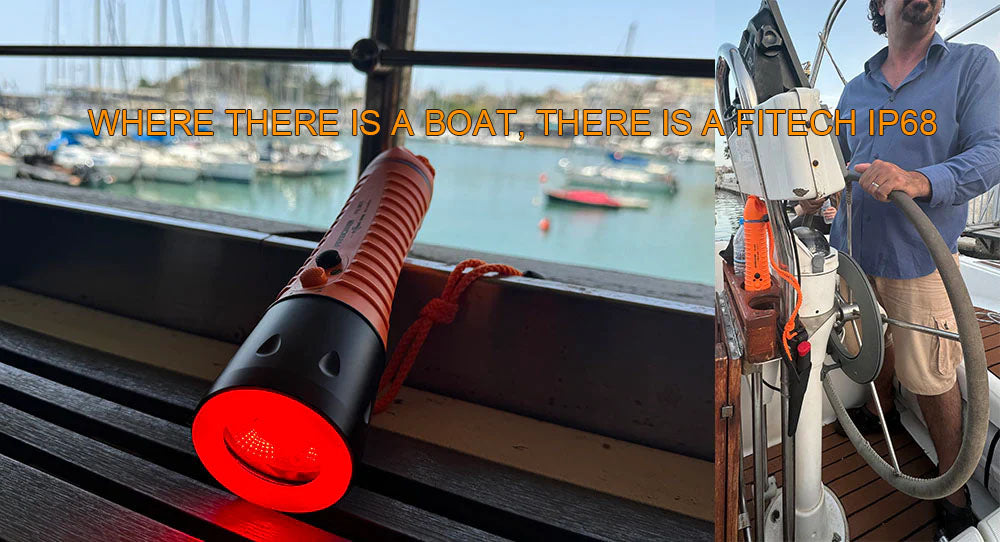
F12 6815 U-Search+ Rescue (SOS) Torch
FITHEC F12 Multi-Function Boat Torch: Essential for Onboard Operations and Emergencies, as a torch for field exploration, users usually face a variety of unpredictable environments, we believe that safety is the most important in harsh environments, strong light is only the most basic requirements, for this reason we have improved the utility of this product in many ways.
In order to prevent accidents, we made a double switch with anti-accidental trigger lock design, any one switch damage will not make the product completely failed, coupled with the 3m drop standard, it will maximise the guarantee that you will not be accidentally lead to turn on or off the light.
IP68 waterproof rating, even deep into the water 120m, so you do not have to worry about water ingress and failure, whether underwater or on land!
In addition, we have set three light modes, high, medium and low, and SOS mode, which are controlled by two switches. This function allows you to adjust different light modes according to different situations, so that you can maximise the balance of the lighting time and the use of light.
Finally, when you are in the outdoor, cavern, sea, underwater and other such complex environment, have a F12 torch on the side will give you a lot of peace of mind.

Emergency flashlights are crucial safety equipment onboard vessels, and ensuring their effectiveness and reliability is paramount. Here are some specific requirements for emergency flashlights:
1. Waterproof Performance: Emergency flashlights must have excellent waterproof performance to ensure they can operate normally in wet or underwater environments.
2. Sturdy and Durable: Flashlights should have a robust casing to withstand impacts and drops, ensuring they won't be damaged during emergencies.
3. Long Battery Life: Emergency flashlights should have long-lasting battery endurance to provide continuous illumination during prolonged emergency situations. LED light sources with low power consumption are preferable.
4. High Brightness and Adjustable: Flashlights should feature high brightness, and the beam should be adjustable to adapt to different usage scenarios.
Switch function
●White spot switch:3 brightness modes 100% or 35% or 10%
●Red signal light switch:
1.Blink light: blink 90 times per Min
2. SOS emergency light
3. Strobe light
4. Steady working light
5. Backup Batteries: Emergency flashlights should come with spare batteries to ensure quick replacement when needed. Using standard batteries facilitates convenient replacements.
6. Portability: Flashlights should be designed to be portable, lightweight, and compact for easy carrying and operation.
7. Ease of Operation: The design should be simple and user-friendly, allowing for quick operation even in emergencies or adverse conditions. For example, buttons should be easy to press, even when wearing gloves.
8. Multi-functionality: Some emergency flashlights may need additional functions such as SOS distress signal mode, red light mode (for preserving night vision), strobe light mode, etc.
9. Lanyard or Clip: Flashlights should be equipped with a lanyard or clip for easy carrying or attachment to the body for quick access.
10. Regular Inspection and Maintenance: Flashlights should be regularly checked for functionality, ensuring sufficient battery power and intact bulbs, and replacements or maintenance should be conducted when necessary.
By meeting these specific requirements, emergency flashlights can provide reliable lighting support during emergencies, ensuring the safety of crew members and vessels.
F12-6815
F12 SOS & Diving Torch
Omni-zoom SOS & Diving torch F12,IP68 waterproof, work underwater at 100m depth, up to 23 hours continuous use , Max 500m range,used in automotive and marine traffic emergency warning, search, disaster relief, diving, fishermen's fishing, etc.
Output: 550 lumens /150 lumens/50 lumens
Batteries: 10200mAh
Finish: Type III hard anodised
Run Time: 10H / 20H /23H
Reflector:PMMA
Sizes: 260*65MM
Mar Distance: 500m
Material: Aerospace aluminium alloy 6061-T6 + polycarbonate
Product Weight: 552g
Waterproof: IP68 rated up to 100m underwater.
Red light mode: Slow Flash / SOS / Burst flash / Long bright light
Warranty Details: Limited Lifetime Warranty


